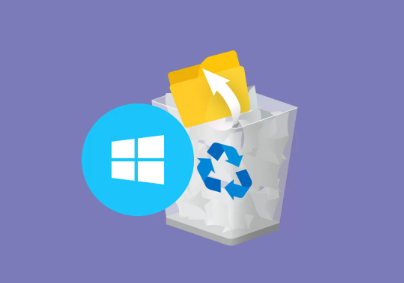Many people believe that when they permanently delete a file from their computer or storage device, it vanishes entirely. In reality, the journey of a deleted file is far more complex. Understanding where permanently deleted files go, how different operating systems handle deletion, and the possibilities for recovery is essential for anyone who works with digital data.
When a file is deleted on a computer, it typically goes through a two-step process: soft deletion and permanent deletion. Soft deletion occurs when a file is moved to the Recycle Bin in Windows, the Trash in macOS, or similar temporary storage areas on Linux systems. During this stage, the file is not truly gone; it is merely marked as “deleted” by the operating system, and the space it occupies is considered available for new data. This means the file can be easily restored because its data remains intact on the storage medium.
Permanent deletion occurs when the user bypasses the Recycle Bin or Trash, or when a file is removed from these temporary storage areas. Many users assume that permanently deleting a file instantly destroys all traces of it. However, most file systems do not immediately erase the actual data. Instead, they remove the references to the file in the file system directory, making the data blocks available for reuse. The file’s content remains on the disk until new data overwrites it. This distinction is critical for understanding file recovery and digital forensics.

How File Systems Handle Deletion
File systems, which are the organizational structures that control how data is stored and retrieved on a storage device, play a pivotal role in deletion. Common file systems include NTFS and FAT32 for Windows, HFS+ and APFS for macOS, and EXT4 for Linux. Each of these file systems handles deletion differently, though the general principle is the same: the file’s entry in the file allocation table or index is removed, but the data remains physically present until overwritten.
NTFS (Windows)
NTFS, the primary file system for modern Windows systems, uses a Master File Table (MFT) to manage files. When a file is deleted permanently:
The MFT entry for the file is marked as deleted.
The clusters (blocks of storage) previously occupied by the file are marked as available for new data.
The actual content of the file remains on the disk until overwritten.
This means that even after permanent deletion, specialized software or recovery services can often reconstruct the file, provided the disk space has not been reused.
FAT32 and exFAT
Older file systems like FAT32 and the more modern exFAT handle deletion in a similar but simpler way. Instead of an MFT, they use a File Allocation Table. Deleting a file involves:
Removing the file name from the directory entry.
Marking the clusters as available in the allocation table.
Again, the actual data persists until new files occupy the same space.
macOS File Systems (HFS+ and APFS)
macOS historically used HFS+ and now predominantly uses APFS. Both file systems operate similarly: deleting a file removes its reference in the file system catalog, and the space is marked as free. APFS, with its modern copy-on-write architecture, introduces snapshots that can further complicate deletion, as older versions of files might persist in snapshots until explicitly purged.
Linux File Systems (EXT4. Btrfs)
Linux file systems like EXT4 handle deletion by unlinking the file from the directory tree. The inode that pointed to the file’s data blocks is removed, and the blocks are marked free. Advanced file systems like Btrfs or ZFS maintain snapshots, meaning deleted files may exist in previous snapshots until those snapshots are deleted or overwritten.
Physical Storage Implications
Understanding where permanently deleted files go requires examining how data is physically stored. Hard disk drives (HDDs) store data magnetically on spinning platters, while solid-state drives (SSDs) use flash memory. The storage medium affects how deletion is handled and the potential for recovery.
Hard Disk Drives (HDDs)
On an HDD, permanently deleted files remain on the disk platters until overwritten. Because data is stored magnetically, recovery software can often read these residual magnetic signals to reconstruct deleted files. This is why even after permanent deletion, it’s possible to retrieve files using recovery tools like Recuva, Panda Assistant, or professional data recovery services. The likelihood of recovery decreases as new data is written to the disk.
Solid-State Drives (SSDs)
SSDs complicate permanent deletion due to TRIM, a command that informs the drive which blocks of data are no longer in use. When a file is deleted, TRIM allows the SSD to erase the corresponding flash cells, making recovery more difficult. Unlike HDDs, SSDs are designed to manage storage space efficiently, and overwritten blocks are usually unrecoverable. However, specialized forensic techniques may still recover some data under certain circumstances.
Cloud Storage and Permanent Deletion
With the rise of cloud storage services like Google Drive, Dropbox, and OneDrive, permanent deletion has become more complex. In cloud environments:
Files deleted from a local sync folder are typically moved to a trash or recycle folder in the cloud.
Cloud providers often retain deleted files for a period (e.g., 30 days) before purging them from their servers.
Even after permanent deletion from the cloud, backup systems or redundant server copies may still contain traces of the data for a limited time.
Thus, the notion of “gone forever” is somewhat relative when it comes to cloud storage.
Data Recovery After Permanent Deletion
Even though permanent deletion removes references to a file, recovery is often possible if the data blocks have not been overwritten. Recovery methods vary based on the file system, storage medium, and software used.
Recovery Software
Panda Assistant
Permanently deleting a file can feel like the end of the road, but with Panda Assistant, recovery is often still possible. Panda Assistant is a powerful data recovery tool designed to retrieve lost files from hard drives, SSDs, USB drives, memory cards, and other storage devices. It works even when files are removed from the Recycle Bin, formatted, or lost due to system errors.
How Panda Assistant Works
When a file is permanently deleted, the operating system usually only removes its reference from the file system, marking the storage space as available. The actual data remains on the disk until overwritten. Panda Assistant scans the device for these “orphaned” data blocks and reconstructs the files. Its advanced algorithms can detect a wide variety of file types, including documents, images, videos, and audio files, making recovery highly effective.
Steps to Recover Files
Install and Launch Panda Assistant: Download and open the software on your computer. Avoid installing it on the same drive where files were deleted to prevent overwriting data.
Select the Target Drive: Choose the drive or partition where the deleted files were originally located.
Scan the Drive: Panda Assistant offers a deep scan option to locate files that are not visible in the file system. The process may take time depending on the storage size.
Preview and Recover: After scanning, the software displays recoverable files. Preview them to ensure accuracy, then select the files you want to restore. Save them to a different drive to avoid overwriting existing data.
Panda Assistant simplifies the complex process of file recovery, offering a user-friendly interface and reliable results. Whether files were accidentally deleted, lost due to formatting, or corrupted, Panda Assistant gives you the best chance of restoring your valuable data safely.
These tools work by searching for file signatures or analyzing the file system metadata to locate files that are no longer indexed.
Professional Data Recovery Services
When software fails, professional data recovery services can retrieve files using advanced techniques like:
Disk imaging: Creating a sector-by-sector copy of the storage device to work on without risking further damage.
Firmware recovery: Repairing or bypassing corrupted drive firmware to access data.
Chip-off recovery: For SSDs, physically removing memory chips and reading them with specialized equipment.
Professional services are often necessary for physically damaged drives or SSDs with TRIM-enabled deletion.
Secure Deletion Methods
For users who want to ensure files are truly irrecoverable, standard deletion is insufficient. Secure deletion techniques are necessary to overwrite data completely.
File Shredding
File shredding software overwrites deleted files with random data multiple times. This ensures that recovery tools cannot reconstruct the original content. Examples include Eraser for Windows and Secure Delete (srm) for Linux.
Full Disk Encryption
Encrypting a drive and then deleting the encryption key can render all stored files effectively unrecoverable. This method is commonly used for highly sensitive data.
Physical Destruction
For the most sensitive data, physical destruction of the storage medium—such as shredding an HDD platter or incinerating flash memory—ensures that deleted files cannot be recovered by any means.
Common Misconceptions About Permanent Deletion
There are several myths and misunderstandings surrounding permanent deletion:
Files are gone forever immediately: In reality, the data often persists until overwritten.
Emptying the Recycle Bin guarantees destruction: This only removes file references, not the actual data.
Formatting a drive erases all data: Standard formatting removes the file system index but leaves the data intact. Only full or secure formatting overwrites the data.
TRIM makes SSD data unrecoverable: While TRIM complicates recovery, forensic methods may still extract fragments under certain conditions.
Understanding these misconceptions helps users make informed decisions about file deletion and recovery.
Digital Forensics and Deleted Files
In digital forensics, permanently deleted files can be a critical source of evidence. Investigators use specialized software to analyze residual data, file fragments, and storage patterns to reconstruct deleted content. This is why sensitive corporate or legal data requires secure deletion methods to prevent recovery after disposal.
Permanently deleted files do not vanish into a digital void immediately. They remain on storage devices until overwritten, governed by file systems, storage medium, and operating system behaviors. While ordinary users may perceive permanent deletion as irretrievable, recovery tools and professional services can often restore these files. Understanding the mechanics of file deletion, from the MFT in NTFS to TRIM on SSDs, empowers users to manage data effectively and securely. For those concerned with privacy or sensitive information, secure deletion methods, encryption, and physical destruction are necessary to ensure data cannot be recovered. In the age of digital storage, knowledge about where permanently deleted files go is essential for anyone navigating the complex interplay between convenience, security, and data management.
About us and this blog
Panda Assistant is built on the latest data recovery algorithms, ensuring that no file is too damaged, too lost, or too corrupted to be recovered.
Request a free quote
We believe that data recovery shouldn’t be a daunting task. That’s why we’ve designed Panda Assistant to be as easy to use as it is powerful. With a few clicks, you can initiate a scan, preview recoverable files, and restore your data all within a matter of minutes.

 Try lt Free
Try lt Free Recovery success rate of up to
Recovery success rate of up to









